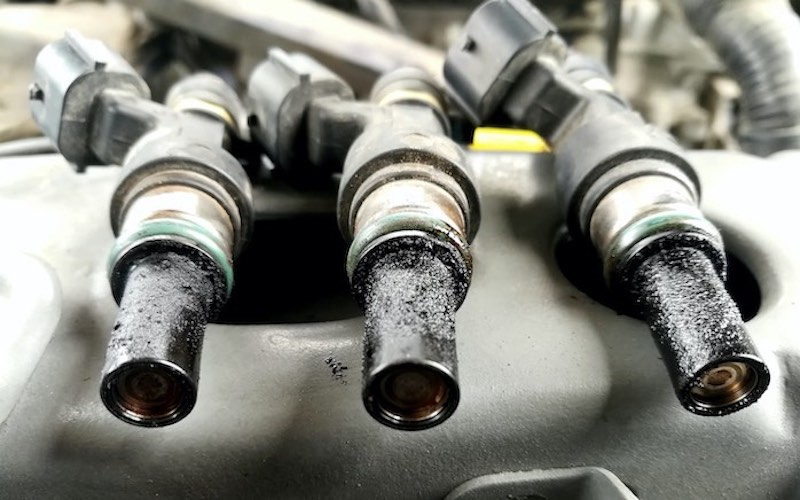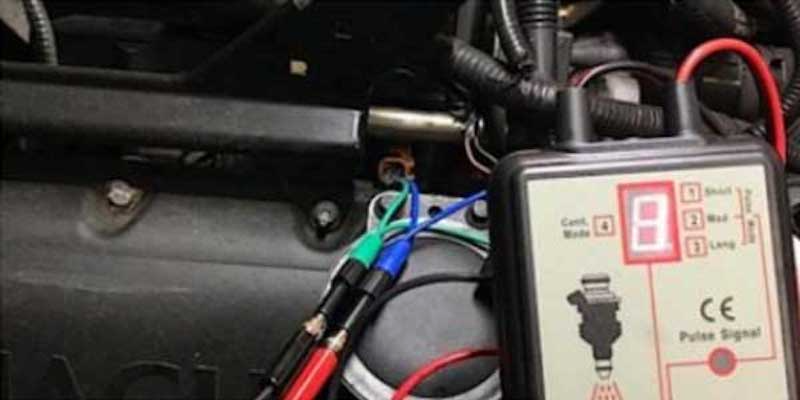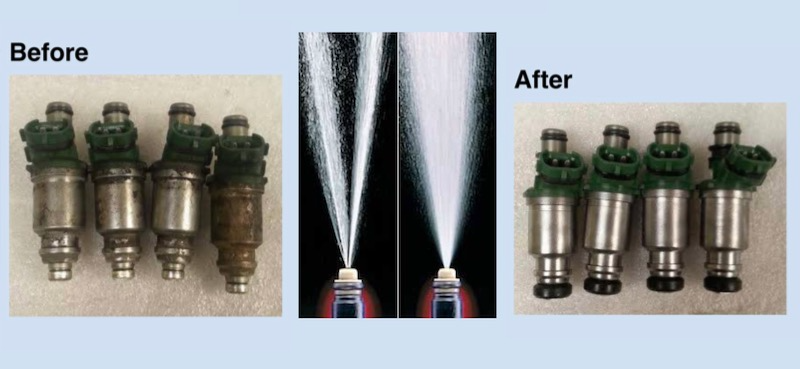Your fuel injectors are a crucial part of your fuel system. They spray fuel into the cylinders or intake manifold of the engine and can cause issues if they are faulty. Injectors have the finest tolerances of any mechanical part in the engine and should be serviced every 24,000 miles. If you suspect that your injectors are malfunctioning and/or beginning to fail, there are several methods you can use to test them.

How To Test Fuel Injectors
Symptoms Of Failing Or Dirty Fuel Injectors
Your car’s fuel system is comprised of the fuel pump, filter, tank, and injectors. Issues with any of these components may reveal similar symptoms. But, if you experience one or more of the problems listed below, the fuel injectors may well be the main culprit. Here is what to look for:
- Difficult Starting: If you have to crank the car many times before it starts, the injectors could be the issue. You may also have the same problem if the fuel pump or filter is damaged. If you have run out of gas before, then this can also cause fuel injector problems.
- Uneven Idling: Your car may struggle to maintain an even idle at traffic lights or even stall. Some cars idle higher at start up, so this issue may only present itself after the engine has warmed up.
- Rough Running: If your engine feels rough when accelerating, the injectors may not be delivering the right amount of fuel. This is usually more noticeable under hard acceleration. This issue can also be traced back to a damaged or partially blocked fuel filter.
- Poor Performance: Does your vehicle feel like it’s lost some of its mojo? It may not be getting the right amount of fuel under heavy loads. A weak injector won’t be able to deliver enough gas into the combustion chamber. This will result in an overly lean fuel/air mixture.
- Excessive Fuel Consumption: Are you refueling more often than before? Keep an eye on how many miles you do between fill ups. Excessive fuel consumption can often be traced back to leaky fuel injectors.
- Smell Of Fuel: A modern high pressure fuel injection system can develop microscopic leaks. Fuel evaporates quickly so sometimes the only sign that you have a leak is a strong smell of gas from under the hood, specifically the engine bay.
Ignoring any one of these symptoms can eventually lead to engine damage. The oxygen sensor will lacquer up and your catalyst will fail. This will cause excess pollution and a failed emissions test.

Testing The Injectors
If your car is exhibiting the above mentioned traits, then it’s time to test the injectors. There are several simple checks you can carry out in your own garage:
Items you may need:
- Screwdriver
- Metal Rod
- OBDII Scanner
- Multimeter
The Metal Rod Test
First you will need to gain access to the injectors. Most vehicles have them running along a fuel rail along the top of the intake manifold. V-type engines will have a fuel rail on either side of the motor. A plastic cover may sometimes need to be removed to see where they are located.
Start the car and then place a thin metal rod or screwdriver on the tip of the fuel injector. Place your ear on the other end and the rod will act as a sound conductor. You should hear a clicking sound as the injector is working away.
Repeat this procedure for each injector. The metal rod test will reveal if the injectors are getting power and working. It can’t tell you if they are providing the required amount of fuel.
Electrical Testing
If one or more of the injectors are not making a clicking noise, you can use a multimeter to see whether they are receiving electric current.
Disconnect the injectors from the fuel rail and turn the ignition to the ‘on’ position. Attach the multimeter’s black and red leads into the fuel injector plugs on the fuel rail. You should see a 12-volt reading. Repeat this procedure for all the plugs on the rail.
OBDII Scanner Test
An OBDII scanner plugs into your vehicle’s computer and checks for error codes. If you have one, you can see whether there have been any errors logged in the vehicle’s Electronic Control Unit (ECU). Look for air/fuel ratio errors, oxygen sensor faults and fuel system issues.

Contact TLF Performance
If one of these methods reveals a fault, or if you need a more in-depth analysis, it’s time to give TLF Performance Parts a call. You can also schedule a time to talk to an expert at TLF Performance here.
We have the best fuel injection testing systems around, and for a nominal fee we can test your injectors under a wide range of conditions. We also provide you with a detailed analysis of the results.
Our comprehensive methods include:
- Removal of bottom O-Rings
- Injector flush
- Fuel injector pulsing at 7,000rpm for 2 minutes
- Flow rate testing
From there you can decide whether you would like your injectors cleaned or rebuilt. Or perhaps you want a custom set of injectors instead. Whichever route you decide, TLF Performance Parts is here to help. With over 20-years of experience with remanufactured fuel injectors, we create "Better Than OEM" OEM products. Give us a call on 618-715-8200, or contact us online.
